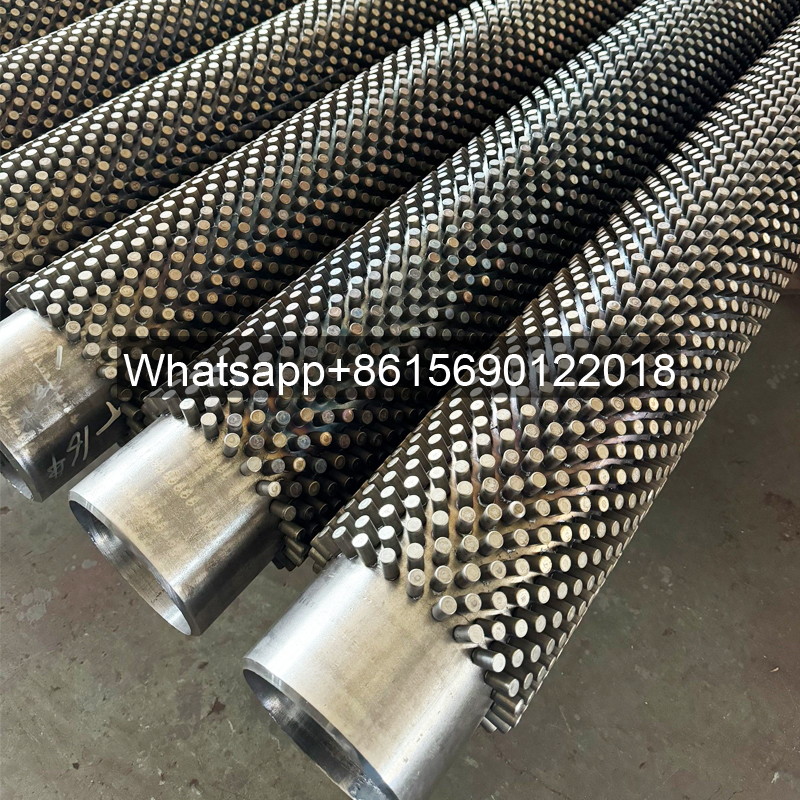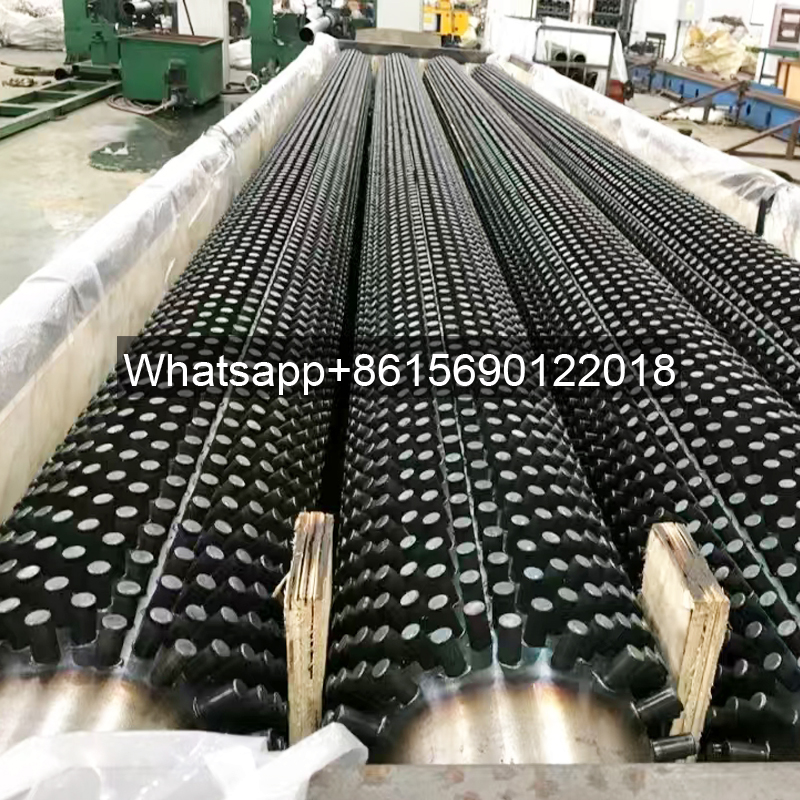Studded Fin Tubes, also known as pin tubes, are heat exchange components widely used in the petroleum and chemical industries. Their manufacturing process and welding methods are directly related to product quality and performance.

The manufacturing process for studded fin tubes begins with the selection of high-quality raw materials.
These materials typically possess excellent heat and corrosion resistance to withstand harsh operating environments.
Through precision machining, the raw materials are processed into heat exchange tubes of predetermined dimensions. Prossimo, the pin heads are machined and welded. The pin heads are arranged in a square or hexagonal pattern and welded evenly to the surface of the heat exchange tube, forming a cylindrical, pin-shaped structure. This step is crucial as it directly affects the heat transfer efficiency and durability of the pinned fin tube.
Studded Fin Tubes primarily utilize resistance welding technology for welding.
The welding process is precisely controlled by a PLC program, ensuring consistent weld quality for each pin head. Feed and indexing motors ensure precise welding positions. The welding process utilizes a nodule-free welding technique, which minimizes weld protrusion at the base of the stud head (approximately 1mm) to reduce fluid resistance and enhance heat transfer efficiency. This welding method not only improves product performance but also reduces energy consumption.
After production, studded fin tubes undergo rigorous quality inspections, including visual inspection, dimensional measurement, and pressure testing, to ensure that each stud head meets design requirements.
The manufacturing process for studded fin tubes also offers high flexibility, allowing the specification and quantity of stud heads to be adjusted to meet the heat transfer needs of various applications.
The manufacturing process for studded fin tubes combines precision machining, welding technology, and strict quality control to ensure efficient and durable performance.
Thanks to its enhanced heat transfer properties, studded fin tubes are effective in a variety of heat transfer scenarios. The processing technology must be tailored to the material and application requirements to ensure performance and longevity.
Applications of Studded Fin Tubes
The applicable applications vary depending on the structural characteristics. In boiler economizers, studded fin tubes enhance heat transfer from the flue gas side, withstand temperatures of 400-600°C, and are suitable for dusty flue gas environments. In chemical heat exchangers, studded fin tubes made of corrosion-resistant materials are used for heat transfer in acidic and alkaline media, with the density of the studs adjusted according to the severity of the corrosiveness.
In waste heat recovery equipment, studded fin tubes improve the heat utilization rate of low-temperature flue gas, while marine propulsion systems utilize their vibration resistance to adapt to turbulent environments.
Processing techniques require a balance between precision and durability.
When welding studded fins, argon arc welding is used, with a current controlled between 80-120A to ensure penetration depth and avoid cold welds. Integrally formed studded fin tubes are suitable for thin-walled pipes. The stamping pressure is set according to the material thickness, with carbon steel pressure being 10%-15% higher than stainless steel. The stud spacing tolerance is controlled to ±0.5mm, and the height tolerance is no more than 0.3mm to ensure uniform heat transfer.
The surface treatment of studded fin tubes affects their performance.
High-temperature applications require spraying a high-temperature-resistant coating with a thickness of 0.1-0.2mm. Corrosive environments require an anti-corrosion coating, and the coating adhesion must pass a cross-cut test. After processing, a hydraulic pressure test is performed at 1.5 times the operating pressure, maintaining pressure for 30 minutes without leakage.
Appropriately selecting the application scenario and adhering to processing specifications can fully utilize the heat transfer advantages of the Studded Fin Tube, ensuring stable operation in energy, chemical, and other fields, while balancing heat exchange efficiency and equipment durability.
Studded Fin Tube Packaging

 dtfinnedtube.com
dtfinnedtube.com

